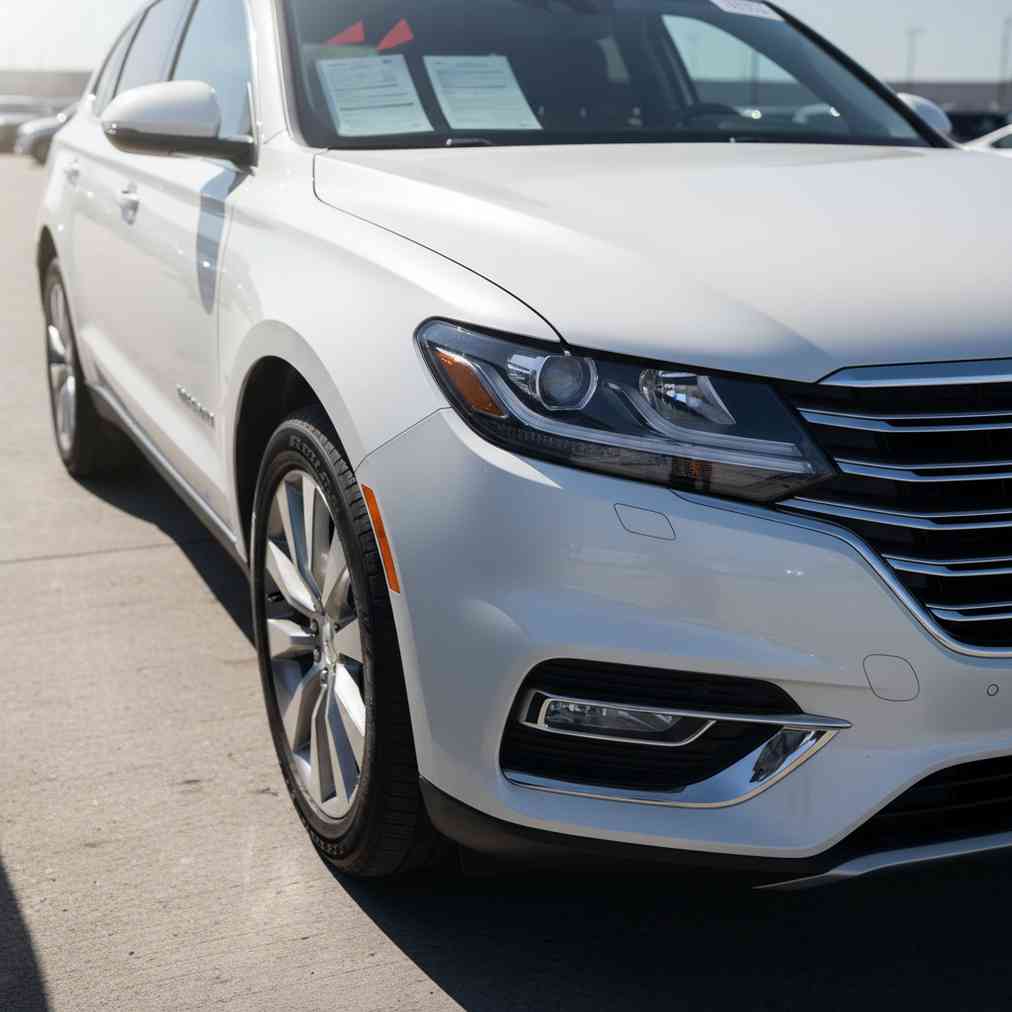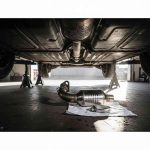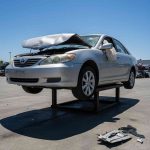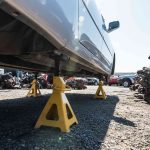Understanding Insurance Salvage Auctions
Insurance salvage auctions are specialized marketplaces where insurance companies sell vehicles that have been declared a **total loss** due to incidents like accidents, theft recovery, or natural disasters such as flood or hail damage. When the estimated repair costs exceed a certain percentage of the car’s current market value, insurers declare the vehicle a total loss and sell it at auction to recoup some of the money paid out on claims.
These auctions have become increasingly accessible to the general public through online platforms, making it easier for both licensed dealers and individual buyers to participate. Understanding how these auctions work is crucial for anyone looking to purchase a salvage vehicle, whether for repair, parts, or export purposes.
How Insurers List Vehicles at Salvage Auctions
The process begins when an insurance company determines that a vehicle is a total loss. Insurers list salvage vehicles through major auction houses like **Copart**, **IAAI**, and **Manheim** following a systematic approach.
The Listing Process
- After declaring a vehicle a total loss, the insurance company applies for a **salvage title**
- The vehicle is transported to the designated auction house facility
- Auction house staff inspect and categorize the vehicle based on condition
- Detailed listings are created with photos, damage reports, and vehicle specifications
- The vehicle is assigned a lot number and scheduled for upcoming auctions
Vehicle Condition Categories
Auction platforms classify vehicles based on their operational status and condition. Common categories include:
| Category | Description | Key Considerations |
|---|---|---|
| Run and Drive | Vehicle starts and can be driven | May still have significant damage affecting safety |
| Starts | Engine starts but vehicle may not drive properly | Could have transmission or drivetrain issues |
| Stationary | Vehicle does not start or run | Requires towing and potentially major repairs |
Title Status Disclosure
Insurance companies are generally transparent about title status and damage details. Most vehicles carry a **salvage title**, indicating they are not roadworthy in their current state. Some may qualify for a **rebuilt salvage title** after proper repair and state inspection. Listings marked “Bill of Sale (No Title)” cannot be registered for road use in the U.S. and are intended for parts or export only.
Understanding Buyer Fees and Total Costs
The winning bid price represents only a portion of the total investment required. Buyers must budget for several additional costs that can significantly impact the overall expense.
Auction-Related Fees
- Buyer’s Premium: A percentage of the winning bid charged by auction platforms
- Documentation Fees: Charges for title transfer and paperwork processing
- Gate Fees: Some locations charge fees for vehicle pickup
- Storage Fees: Daily charges if vehicle pickup is delayed beyond the free period
Transportation and Logistics Costs
Since most salvage vehicles cannot be driven, buyers must arrange and pay for transportation. Costs vary based on distance, vehicle size, and whether the vehicle can roll or requires special equipment for loading.
Repair and Restoration Expenses
The most variable and potentially substantial cost involves repairs. Professional estimates should be obtained before bidding, and buyers should factor in the cost of both labor and replacement parts. For those looking to source affordable replacement parts, salvage yards near me can provide significant savings on the restoration process.
Major Risks for Salvage Auction Buyers
While salvage auctions offer the potential for significant savings—often **20-40% lower** than clean-title vehicles—they come with substantial risks that buyers must carefully consider.
Hidden Damage and “As-Is” Sales
“Overall, buying a salvage car on an insurance auction can be a risky proposition, and it’s important to be aware of the potential risks before making a purchase.”
All salvage vehicles are sold **”as-is”** with no warranties or guarantees. Damage may be more extensive than visible in photos or described in listings, leading to unexpected repair costs that can exceed the vehicle’s value.
Structural Integrity Concerns
Frame or unibody damage represents one of the most serious risks. Such damage can be extremely costly to repair properly and may compromise the vehicle’s safety in future accidents. Flood-damaged vehicles present particular challenges due to potential electrical system issues that may not manifest immediately.
Title and Registration Challenges
Salvage title regulations vary significantly by state, affecting whether a vehicle can be repaired and legally driven on public roads. Some states have strict inspection requirements, while others may not allow certain types of salvage vehicles to be re-titled at all.
Insurance and Coverage Issues
Insuring salvage and rebuilt title vehicles can be challenging. Many insurers offer limited coverage options, often excluding comprehensive and collision coverage. Premium costs are typically higher than for clean-title vehicles.
Bidding and Financial Risks
- No Test Drives: Vehicles cannot be driven or thoroughly tested before purchase
- Auction Excitement: Fast-paced environment can lead to overbidding
- Final Bid Commitment: Bids are binding with no option to retract
- Total Cost Escalation: Combined costs may exceed comparable clean-title vehicle values
Essential Inspection Tips and Evaluation Guidelines
Smart buyers understand that thorough preparation and inspection are crucial for success. First-time buyers should observe several auctions without bidding to understand the dynamics and processes.
Pre-Auction Research
- Vehicle History Reports: Obtain Carfax or AutoCheck reports using the VIN
- Market Value Research: Determine the vehicle’s value in good condition
- Repair Cost Estimates: Get professional estimates for visible damage
- State Law Review: Understand local salvage title regulations
Physical Inspection Checklist
| Inspection Area | Key Points to Check | Red Flags |
|---|---|---|
| Frame/Structure | Look for bends, cracks, or welding repairs | Severe frame damage, uneven gaps |
| Engine/Mechanical | Check fluid levels, listen for unusual sounds | Oil contamination, missing parts |
| Electrical Systems | Test lights, indicators, and electronic features | Water damage signs, corroded connections |
| Safety Systems | Check airbag deployment, seatbelt condition | Deployed airbags, damaged safety equipment |
“Always have a professional mechanic thoroughly inspect any salvage vehicle before purchase. They should pay special attention to frame damage and airbag functionality.”
Financial Planning Strategy
Successful bidders set strict budgets based on realistic calculations:
- Start with the vehicle’s post-repair market value
- Subtract estimated repair costs (add 20-30% buffer)
- Subtract all fees, taxes, and transportation costs
- Subtract desired profit margin (if reselling)
- The result is your maximum bid amount
Current Market Trends and Developments
The salvage auction market has evolved significantly in recent years, driven by technological advances and changing industry dynamics.
Increased Online Access
Online auction platforms have democratized access to salvage auctions, allowing public participation through authorized brokers or public-facing websites. This has increased competition and, in some cases, driven up prices.
Rising Total Loss Declarations
Increasing auto repair costs and sophisticated vehicle technology have led insurers to declare total losses on relatively newer or less severely damaged vehicles. This trend has increased the inventory of potentially repairable salvage cars but also raised average auction prices.
Enhanced Transparency
Modern auction platforms provide more detailed vehicle histories, high-resolution photos from multiple angles, and comprehensive damage reports. Some even offer virtual reality inspections and detailed condition reports prepared by certified inspectors.
Best Practices for First-Time Buyers
First-time salvage auction buyers should follow proven strategies to minimize risks and maximize their chances of success.
Education and Preparation
- Attend several auctions as an observer before bidding
- Join online forums and communities focused on salvage vehicles
- Consider taking automotive repair courses to better assess damage
- Build relationships with trusted mechanics and body shops
Strategic Bidding Approach
“The bid you make is final, so you don’t have the option to retract from the bid that you are making.”
Given the binding nature of auction bids, buyers should:
- Set maximum bid amounts before the auction begins
- Avoid emotional bidding and stick to predetermined limits
- Factor in all costs when determining bid amounts
- Have backup vehicle options in case primary targets exceed budget
Alternative Options for Budget-Conscious Buyers
While salvage auctions can offer great deals, they’re not the only option for budget-conscious vehicle buyers. Those looking to sell their current vehicle to fund a purchase can explore cash for cars services to get instant quotes and quick sales.
For buyers primarily interested in parts rather than whole vehicles, traditional salvage yards and self-service facilities often provide more predictable pricing and the ability to inspect parts before purchase.
Conclusion: Making Informed Decisions
Salvage auctions represent a unique opportunity for knowledgeable buyers to acquire vehicles at substantial discounts. However, success requires thorough preparation, realistic budgeting, and acceptance of inherent risks.
The key to success lies in education, preparation, and disciplined bidding. Buyers who take the time to understand the process, accurately assess vehicles, and set realistic budgets are most likely to achieve positive outcomes. Those unprepared for the complexities and risks may find themselves facing unexpected costs that eliminate any potential savings.
Whether purchasing for repair, parts, or export, insurance salvage auctions can provide value for informed buyers who approach them with appropriate caution and expertise. The market continues to evolve, offering both new opportunities and challenges for participants willing to do their homework and bid strategically.





Leave a Reply
You must be logged in to post a comment.